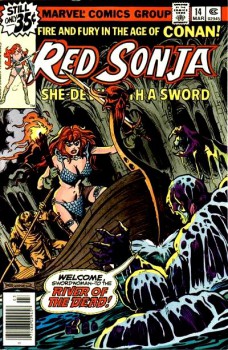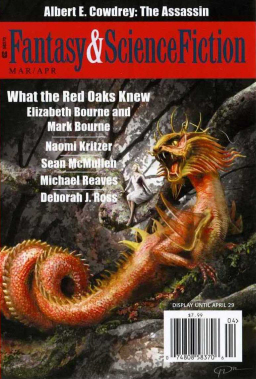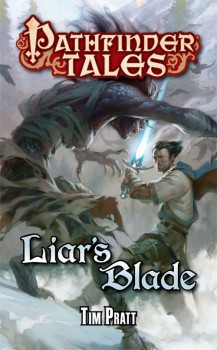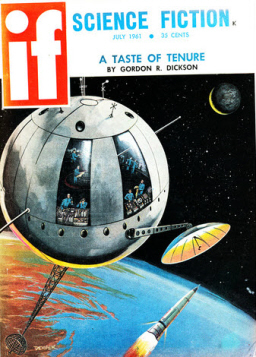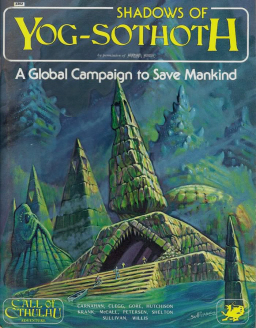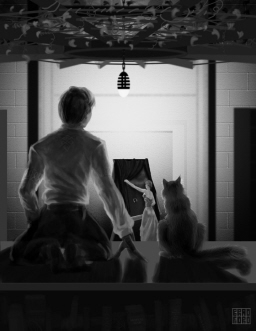 Today we are proud to present the second and final installment in “The Sealord’s Successor,” a complete 35,000-word novella of fantasy mystery, and the third tale of Gallery Hunters Gloren Avericci and Yr Neh.
Today we are proud to present the second and final installment in “The Sealord’s Successor,” a complete 35,000-word novella of fantasy mystery, and the third tale of Gallery Hunters Gloren Avericci and Yr Neh.
Gloren Avericci and Yr Neh find themselves drawn into a deadly conspiracy involving a powerful kingdom, ancient secrets… and a very peculiar painting.
Our perilous, mad descent began in the middle of a raging storm. The runners bore us along a mountain path lit only by flashes of blinding lightning, tromping at speed down water-washed trails alongside deep chasms and sheer drop-offs, bearing us in pursuit of those who had left the citadel.
Dressed as we still were for a coronation feast, neither Gloren nor I were prepared for this sudden chase. But Gloren leaned far out into the night, regarding the winding road below us with visible distress. Crossing close below us was the carriage of Baron Lurec, and ahead of him that of the Countess Therissa and her companion Velice. Further on still, but lost from view in the night’s inclement weather, Garder Jho’s medical team was surely nearing Landing Port, the primary harbor.
I glanced back up toward the citadel, visible only as a dark patch against flickering skies, and noted the beacon. This signal, a red circle encompassed by a green ring, was a sign the harbor should be sealed, forbidding passage into or out of Landing Port.
I had asked Gloren who, exactly, we were chasing after a particularly harrowing turn.
“Everyone,” he replied.
Gloren Avericci and Yr Neh were last seen in “The Tea-Maker’s Task” (published here on December 30th) and “The Daughter’s Dowry” (October 14). Of “The Daughter’s Dowry,” Tangent Online said, “A story such as this deserves a world of its own and more adventures from its hero,” and it called “The Tea-Maker’s Task” “an entertaining, tongue-in-cheek fantasy… I wanted more.” We’re more than happy to oblige with this third exciting installment of the adventures of Gallery Hunter Gloren and his cat companion, Yr Neh.
The complete catalog of Black Gate Online Fiction, including stories by Mark Rigney, C.S.E. Cooney, Vaughn Heppner, E.E. Knight, Jason E. Thummel, Judith Berman, Howard Andrew Jones, Dave Gross, Harry Connolly, and others, is here.
“The Sealord’s Successor” is a complete 35,000-word novella of fantasy mystery presented in two parts, with original art by Aaron Bradford Starr. It is offered at no cost. Part I is here.
Read Part II here.
 Tasty Minstrel Game’s latest Kickstarter project has blown away funding goals and, with a week left, looks to be one of the best Kickstarter deals that I’ve seen in quite some time. This game is basically a dice-based dungeon crawl in a box (a treasure box, no less … and a mimic box for Kickstarters!) that has 7 days to go as of this writing (funds at 1:00 am Eastern on March 20).
Tasty Minstrel Game’s latest Kickstarter project has blown away funding goals and, with a week left, looks to be one of the best Kickstarter deals that I’ve seen in quite some time. This game is basically a dice-based dungeon crawl in a box (a treasure box, no less … and a mimic box for Kickstarters!) that has 7 days to go as of this writing (funds at 1:00 am Eastern on March 20).